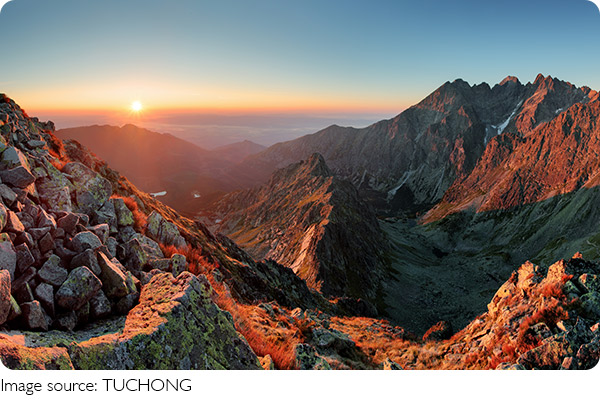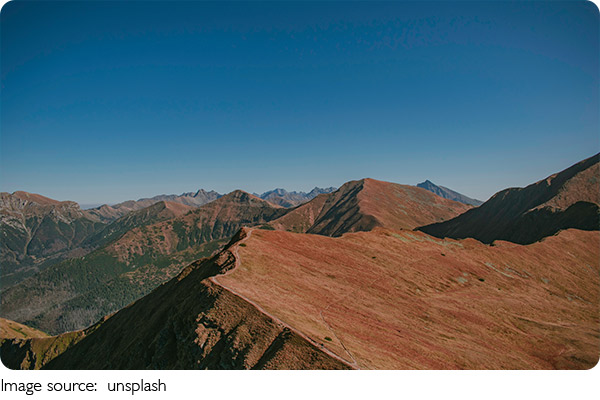Tatra Mountains Getaway

If you're craving an outdoor escape filled with fresh mountain air, mirror-like alpine lakes, and jaw-dropping views—but want to avoid the tourist crowds of Western Europe—the Tatra Mountains might just be your dream destination.
Nestled between Poland and Slovakia, the Tatras are the highest part of the Carpathian Mountains and offer Central Europe's own take on the Alpine experience. Whether you're into scenic hiking trails, thrilling ski slopes, or simply the peace of quiet valleys, this hidden gem has something for you.
Where Are the Tatra Mountains?
The Tatra Mountains straddle the border between southern Poland and northern Slovakia. The Polish side is smaller and more accessible to tourists, especially from the lively resort town of Zakopane. The Slovak side, with its larger share of the range, offers more wilderness and fewer crowds.
The Tatras are protected by Tatra National Parks in both countries—Tatrzański Park Narodowy (Poland) and Tatranský národný park (Slovakia)—ensuring the natural beauty is carefully preserved.
Top Attractions in the Tatras
1. Morskie Oko (Poland)
Morskie Oko, or "Eye of the Sea," is Poland's largest and most famous mountain lake. Surrounded by dramatic peaks, it's a 2-hour walk (or horse cart ride partway) from the Palenica Białczańska parking area. Entry to Tatrzański Park costs around €2. The trail is paved and popular with families.
2. Rysy Summit (Both Countries)
Rysy is the highest peak in Poland (2,503 meters) and can be climbed from either country. The Polish route starts from Morskie Oko and takes about 7–8 hours round trip. The Slovak side, starting from Štrbské Pleso, is slightly less steep. The views from the top are phenomenal—you can see deep into both countries.
3. Štrbské Pleso (Slovakia)
A peaceful, glacial lake and resort area, Štrbské Pleso is perfect for beginner hikers, families, or winter visitors. It's also a gateway for Slovak hiking routes and cross-country skiing.
4. Kasprowy Wierch Cable Car (Poland)
For those less keen on hiking but eager for alpine views, the Kasprowy Wierch cable car lifts you from Kuznice (near Zakopane) to the summit in 12 minutes. A return ticket costs around €28. In winter, this area becomes a ski hub.
Best Times to Visit
• Summer (June–September): Great for hiking and mountain photography. Trails are open and weather is mild.
• Autumn (October): The forests turn golden, and the crowds thin out.
• Winter (December–March): Ski season, especially around Zakopane and Tatranská Lomnica.
• Spring (April–May): Snow melts slowly; some trails may still be closed.
Transportation and Getting Around
Getting to the Tatras is relatively simple:
• From Kraków to Zakopane: By bus or train. Buses run frequently and cost about €7–9 (2.5–3 hours). Train: €8–12 (3–4 hours, less frequent than buses).
• From Bratislava or Košice to the Slovak Tatras: Trains run to Poprad-Tatry, then transfer to mountain villages like Štrbské Pleso or Tatranská Lomnica (€10–20).
• Once in the region, local buses, cable cars, and marked trails make it easy to explore.
Where to Stay
1. Zakopane (Poland): This mountain town blends rustic charm with a festive atmosphere. You'll find everything from budget hostels to luxurious spa hotels.
• Hotel Aries & Spa – Elegant stay near the town center (€80–180).
• Willa Orla – A traditional wooden guesthouse with warm hospitality (€40–100).
2. Tatranská Lomnica (Slovakia): A quieter choice with ski access and close proximity to national park trails.
• Grand Hotel Praha – Historic hotel with mountain views and great dining (€90–220).
• Vila Beatrice – Cozy and modern, perfect for couples or small families (€70–150).
What to Eat in the Tatras
The local cuisine in both Poland and Slovakia reflects mountain traditions—simple, hearty, and comforting.
• Oscypek (Poland): Smoked sheep's cheese, often grilled and served with cranberry sauce (€2–5).
• Bryndzové halušky (Slovakia): Potato dumplings with creamy sheep cheese and onions (€6–10).
• Kwaśnica (Poland): A sour cabbage soup, perfect after a day of hiking (€3–6).
• Tatranský čaj (Slovakia): A warm herbal tea blend ideal for chilly evenings (€1.50–3).
Local taverns and mountain huts serve these regional dishes with friendly service and rustic charm.
Travel Tips and Etiquette
1. Respect trail rules. Stick to marked paths to preserve the fragile alpine ecosystem.
2. Carry cash. Some remote huts or local buses may not accept cards.
3. Dress in layers. Weather can change quickly at high elevations.
4. Buy travel insurance. Especially if you plan to hike or ski—accidents in the mountains can be costly without coverage.
5. Check trail conditions. In early spring or late autumn, high trails may be closed due to snow or ice.

Why the Tatras Are Worth Your Time
In many ways, the Tatra Mountains feel like a well-kept secret. They offer the kind of postcard-perfect scenery and fresh mountain air you might expect in the Alps—but without the price tag or the crowds. Whether you're hiking to a mountain lake, skiing down a snowy slope, or sipping hot soup in a cozy lodge, the Tatras offer a deeply rewarding experience for anyone who loves the outdoors.
Have you ever explored Central Europe's mountain regions? Or is the Tatras calling your name now? Either way, the mountains are waiting—and they're closer, more affordable, and more beautiful than you might expect.
-
 Psychology Eases PressureHow Can We Use Psychology to Ease Work Stress and Stay Calm, Focused, and Motivated Each Day?
Psychology Eases PressureHow Can We Use Psychology to Ease Work Stress and Stay Calm, Focused, and Motivated Each Day? -
 Wellness for Every CreatureWhat truly makes an animal feel safe, healthy, and content? Let's explore together.
Wellness for Every CreatureWhat truly makes an animal feel safe, healthy, and content? Let's explore together. -
 Unlock Energy FastDiscover the power of 10-minute daily workouts that transform your health!
Unlock Energy FastDiscover the power of 10-minute daily workouts that transform your health!